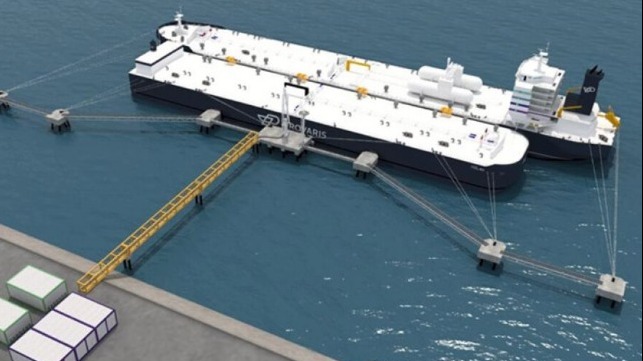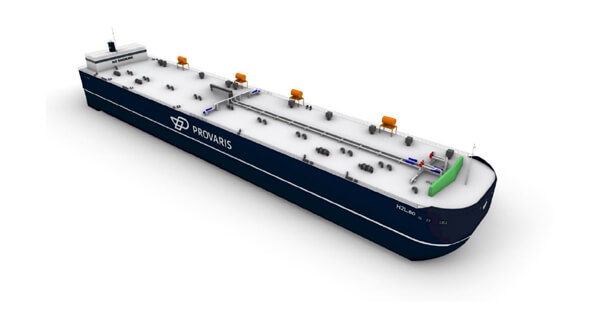Floating Hydrogen Concept Offers Solution to Handling and Storage

Australian start-up Provaris Energy has presented a design concept for floating hydrogen storage which they believe would offer a lower-cost solution for the handling of the emerging fuel and be a compliment to the company’s plans for hydrogen transport. The company reports it has received Approval in Principal from the American Bureau of Shipping for its gaseous hydrogen storage solution following similar design approvals from ABS in 2021 for its hydrogen carrier concepts.
Called the H2Leo, the storage barge would be optimized in size, capacity, and operations for different applications. The company says the design has a large working deck and hull for installing auxiliary systems such as compression and H2 bunkering. The design is flexible with a design capacity range of 300 to 600 tons of hydrogen. They anticipate future development and approvals that would include expanding the storage capacity from 100 to 2,000 tons of hydrogen.
The H2 Leo class will have a fixed beam of approximately 102 feet with a depth of just under 56 feet. The length and draft would vary according to the specific cargo capacity. The design features two cargo tanks with independent isolation, safety valves, and manifolds for compressed hydrogen transfer. The applications the company projects for floating storage include bunkering for the maritime sector, intermittent/buffer storage for green hydrogen production, and long-duration storage for excess renewable energy.

Concept for a floating hydrogen storage solution (Provaris Energy)
“Provaris sees the development of a floating storage solution as a natural extension of its compressed hydrogen IP, providing an alternative to current high-cost bulk-scale storage solutions and improving the economics of its existing projects,” said Provaris’ Managing Director & Chief Executive Officer, Martin Carolan. “We believe a floating storage solution will complement our pipeline of hydrogen production and transport projects and decrease timelines to first revenues and IP commercialization.”
Over the last 18 months, Provaris reports it has been studying ways of leveraging its shipping IP, engineering and class approvals obtained to date on cargo containment and ship designs, to develop a solution for the industry that requires hydrogen storage at scale. They believe floating storage could provide a significant cost advantage to large-scale onshore storage.
Provaris has also been developing designs for a larger and smaller, more economic hydrogen carriers. Their smaller design is for a vessel that would have a capacity of 26,000 cbm transported at 250 bar for a capacity of 430 tons. The vessel would have a range of up to 2,000 nautical miles and they believe it could be operational by 2026 or 2027. The larger vessel would have a capacity of up to 120,000 cbm or 2,000 tons with a range of up to 3,000 nautical miles. They are targeting operations by 2030 for this vessel.
